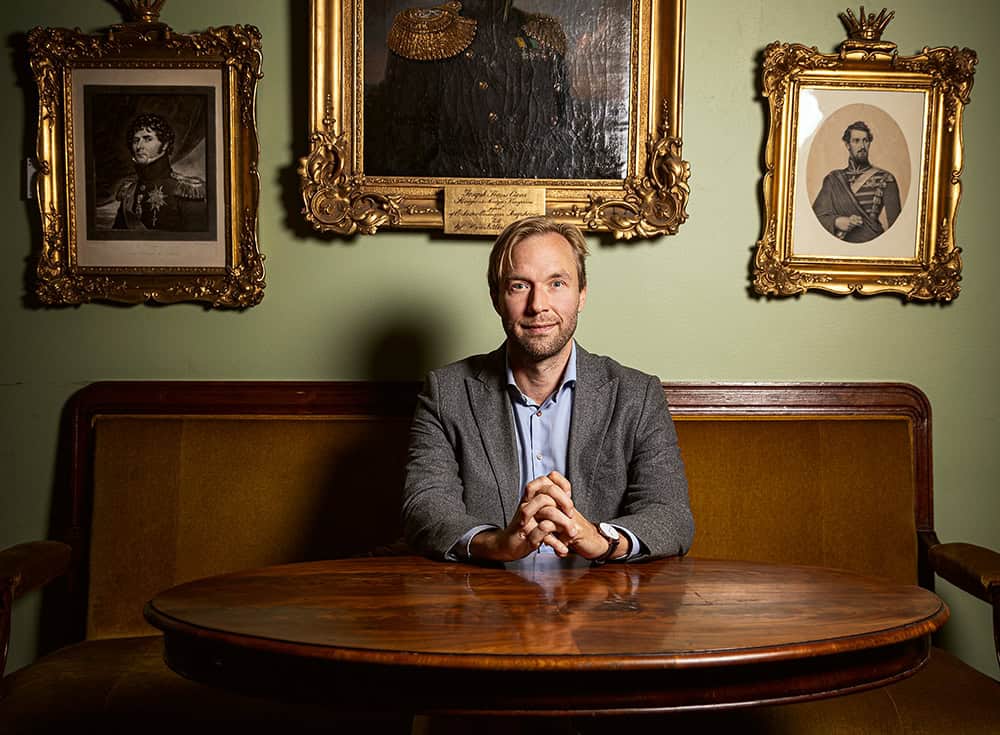Whether it be a detective story, a satirical novel, a roman à clef or an existential drama, the academic world appears quarrelsome, scheming and populated with lonely individuals, with a constant jockeying for position. Researchers are undermined and critical of the research environment, while the students are difficult and/or strange and stupid.
It is in the nature of the genre, says Marta Ronne, a Doctor of Literature, who worked as a senior lecturer for many years and now works as a literary critic and cultural journalist.
“Portrayals of universities have always drawn the reader in by promising that they will reveal pettiness, jealousy and career battles beneath the surface of the educated environment, as well as people who strive to benefit at the expense of others. That doesn’t just apply to novels in the past 20 years; university life in literature is simply bleak,” she says.

Marta Ronne
Doctor of Literature
Her doctoral thesis was on Swedish university novels published before 1943. She chose that year as the end of her study because the genre basically died out in Sweden after the Second World War.
“My theory was that the Second World War changed society radically. The shimmer that had previously surrounded university life disappeared and there was no room for ‘old-fashioned’ university portrayals.”
Since the turn of the millennium, the genre has been resurrected. Ronne explains that a common conflict in older university portrayals is between the protagonist and academia. That conflict remains, for example in Therese Bohman’s Eventide, (Aftonland), from 2016.
“Like in older depictions, the protagonist of the novel believes that a colleague who has built a career as a professor and cultural figure is basically quite mediocre.”
Bohman’s novel harks back to a tradition of criticism of academia in another way too.
“The main character believes in the elitism of academia and is soon disappointed. She believes that art history is about the beautiful and sublime. But at her university, art is relativised. TV soaps and crocheted potholders are just as good as Renaissance art.”
But Ronne believes that the criticism of universities often goes deeper. “Consistently, the novels give a negative picture of the way academia works and of conditions in the research environment, but also of how higher education is financed and of what conflicts and career battles that in turn provokes internally.”
Many older university novels were about the fact that women were not regarded as having a natural place in academia.
“This is no longer the case, of course, because today’s novels depict today’s society. Nowadays, female protagonists in women’s university novels are strong individuals who don’t have to think about whether the university will accord them a place or not.”
Despite that, there are underlying conflicts and contradictions, not least with regard to gender and equal treatment.
“There is often a vague but still present feeling in the female protagonist that the boundaries of her own integrity and authority can easily be compromised. We should not assume that women’s university novels depict a perfectly equal world. They simply depict the world as it is, where any dissonances and inequalities are better hidden, more subtle, more difficult to interpret.”
The question is how much the university novel genre reflects the reality of today’s academia.
Anja Smits is a neurologist and professor at the University of Gothenburg and wrote the novel Den tysta korridoren, (“The Silent Corridor”, 2022). In the book, one of the main characters, Mette Øst, is an oncologist and researches brain tumours. She and her research team have just moved to a prestigious position in Sweden. But she is forced to work harder and harder to keep up with all the demands of the clinic while keeping her research afloat, and she becomes a victim of intrigues and power plays she does not understand.
In the novel, Mette stands alone amid the intrigues at her new department. She believes that everyone wants her to succeed, as long as she shows her best side and works hard.
“Within the world of higher education, it is the person with the best qualifications who usually gets a position. But that does not mean that they are welcome in their new workplace. There may be a manager who would have preferred to hire a completely different person, and it is almost impossible to fight against those structures,” says Smits.

Anja Smits
Neurologist and professor at the University of Gothenburg
She hopes she hasn’t scared too many people away with her book.
“If you are young and want a career in academia, you have to keep your eyes open to the intrigues and power struggles. And above all, you need a mentor in the system who believes in you, who wants you to do well and who supports you. Because decisions are usually made in corridors or over lunch, not in formal meetings.”




















